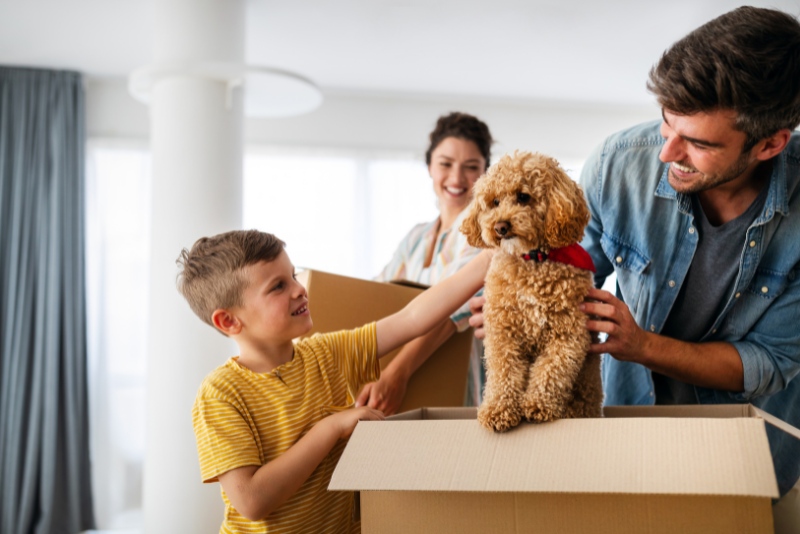Animals react differently to stress. Some begin to cry and moan, some change their eating habits drastically causing stomach issues, and some (usually cats) don’t really seem to care, but then end up going into hiding. What you can do to make this move simpler for your dog or cat is important to do.
1. Talk to your veterinarian
Your vet knows your pet’s disposition best. They may prescribe anti-stress medicines if your animal is easily stressed out. They might also talk to you about a diet change during the process with more soft foods to ease the pressure on their stomach.
If you are moving across the country or out of your vet’s area, ask them for recommendations in your new local spot and as well to transfer all your pet’s records.
You may want to ask them for a paper printed copy in case anything gets lost in the process and keep these documents with your other important papers in your essentials bag.
2. Be patient and spend extra time giving love to your pet
The whole process for them can be overwhelming. Many pets spend 75% of their time just lounging around at home so uprooting them from their familiar spots can be stress-inducing.
Spend some extra time with your fluffy friend. If you are moving close by, take them for walks near the new home and familiarize them ahead of time with the new home.
Studies show a significant stress reduction when your pet has already come into contact with the new home. Giving them treats and positive feedback and associations will ease them into the new home.
3. Update their microchip and name tag on their collar
This is an important step to the move for your pet as if they go missing in their new area, they are not likely to know the way back home yet.
Pets that wander astray usually can easily make it back home when they are familiar with the area, but pets that wander in a new area are bound to get lost.
Having your updated address and phone number on their collar and updated for their microchip is very important.
4. Moving day stress-free pet sitter
Book your pet sitter, or set a time that a family friend will be available to come take your pet and take them for a fun day! Dogs can become aggressive when they see a mover enter their home space and become territorial growling and barking.
Avoid this stress both for you and them by having them taken care of in a neutral space. If you don’t have a local solution, look up a local doggy daycare center that you can pay by the day for care.
5. Drive your pet in your personal car to the new home
Ease the transition to the new home by having their bed and favorite toy in your car and saving their spot for the ride to the new home. Make it a road trip and stop for lots of pee breaks.
6. Acclimate your pet to their new home by creating their space
As soon as you arrive at the new home, create your pet’s space in whatever designated corner you choose. Have their bed ready, a blanket, their favorite toys, and most importantly their food and water dishes.
Don’t make any additional changes to your pet’s lifestyle like a new bed or food change to reduce stress. Having their designated area is critical for your pet’s confidence.
7. Ensure your home is safe for them to be running around before letting them run free
If your home is full of dangerous items from the move, think about putting your pet on another day of doggy day care to ensure their safety. Make sure all dangerous chemicals, paint jars, and whatever other items you wouldn’t want your pet putting their nose in are closed off and unpacked away safely in their spots.
Having cartons and tape around your pet shouldn’t be an issue, but make sure to pet-proof your house and give it a one-over walkthrough before letting Bruno roam freely.
If you have a backyard that is fenced in, double check there is no holes in the fence that he can escape through before releasing him free.

